RESEARCH IMPACT & COLLABORATIONS
Biomedical innovation workshop aims to boost collaboration
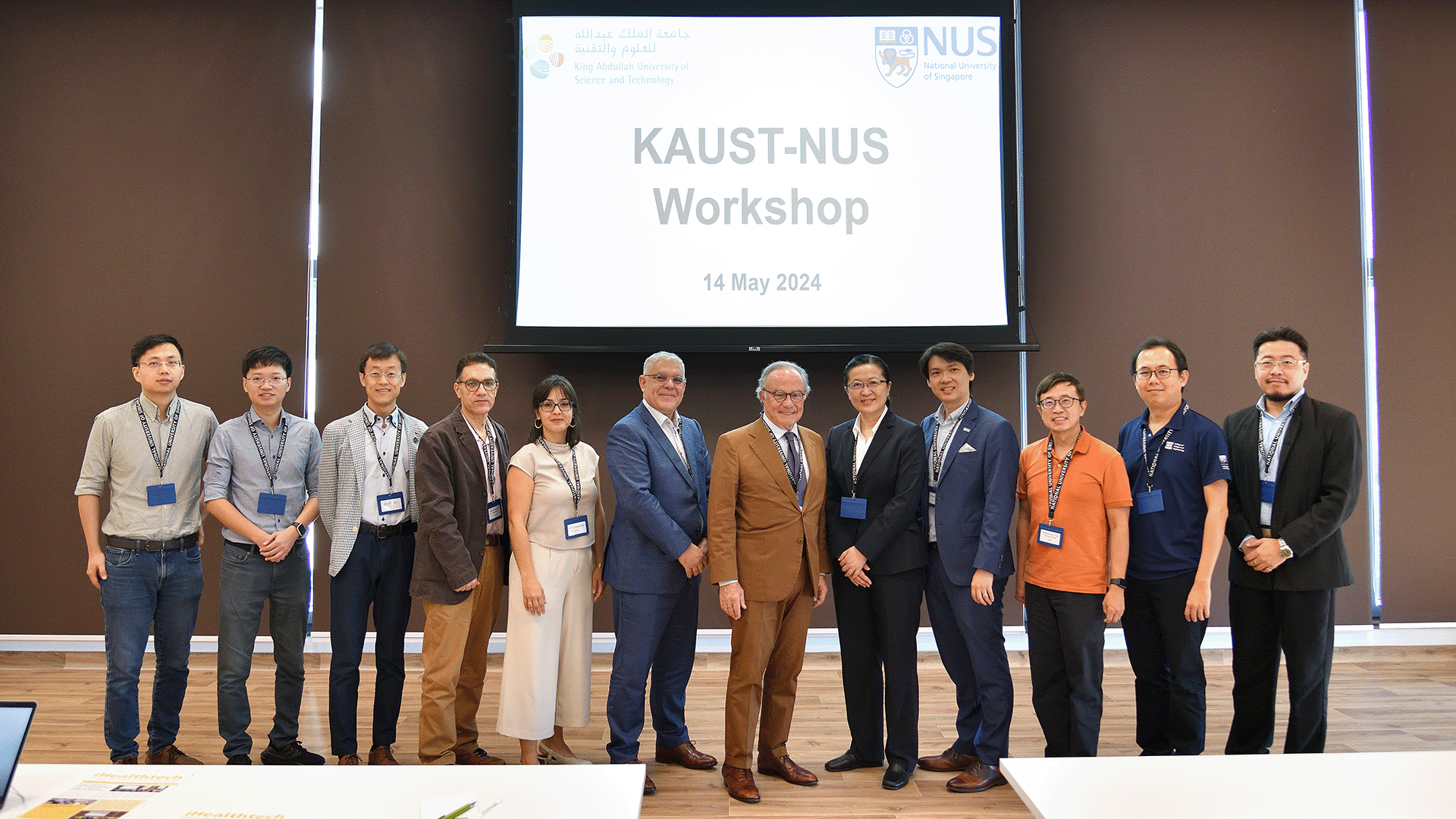
CDE hosted a delegation from Saudi Arabia’s King Abdullah University of Science and Technology (KAUST) for a day-long workshop showcasing biomedical research and healthcare innovation, focused on opportunities for cross-disciplinary cooperation.
The joint research workshop, held on 14 May, aimed to discuss and explore opportunities for greater research collaboration between NUS and KAUST, building on recent exchange visits and growing ties between the two institutions.
Opening the workshop, NUS Deputy President (Research and Technology) Professor Liu Bin (Chemical and Biomolecular Engineering) praised the excellent research work being carried out at KAUST, which she said was “very relevant to the work we are doing here at NUS”.
“There are many problems faced by the world today that are actually in common, and so we really have to work with researchers from different countries to address them together,” Prof Liu told the attendees. “We hope that this joint NUS-KAUST workshop will be a catalyst for further collaboration and exciting joint projects, building strong ties between Singapore and Saudi Arabia.”
Read more at: https://cde.nus.edu.sg/news-detail/biomedical-innovation-workshop-aims-to-boost-collaboration/
SHINE and TSMC launch collaborative research initiative
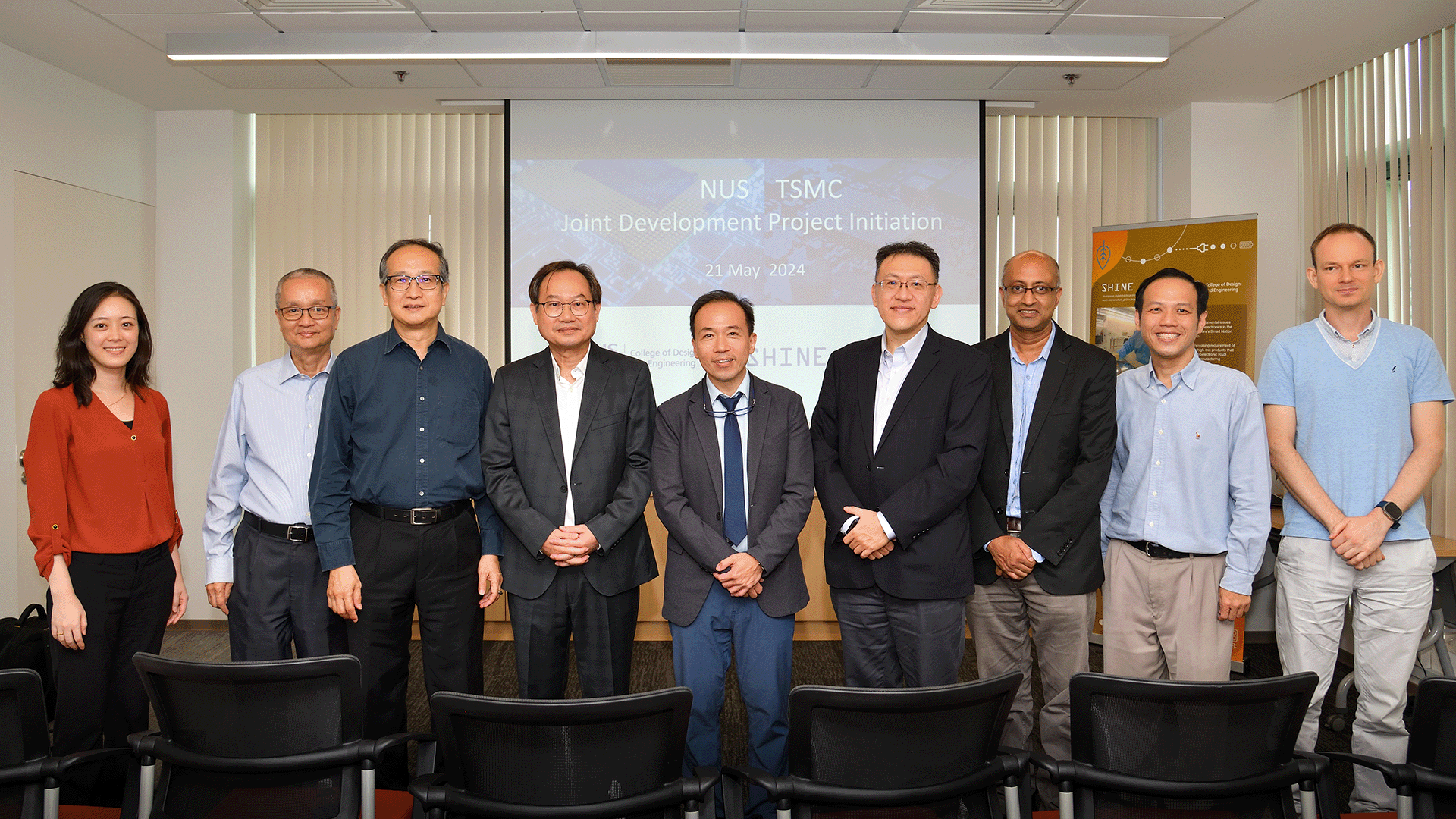
The SHINE research centre at CDE and global semiconductor giant TSMC have launched a groundbreaking joint research initiative, aiming to build a new collaboration driving forward the future of microelectronics.
The partnership is beginning with two joint development projects focused on advanced optical waveguides and thermal management solutions, which both sides hope will lead to further and deeper collaborations in cutting-edge innovation and nurture talent in the semiconductor industry.
Senior faculty, PhD students, researchers and guests from TSMC attended a recent event at CDE to mark this milestone.
Read more at: https://cde.nus.edu.sg/news-detail/shine-and-tsmc-launch-collaborative-research-initiative/
DOA research team leads Heritage Impact Assessment (HIA) on the former Turf City
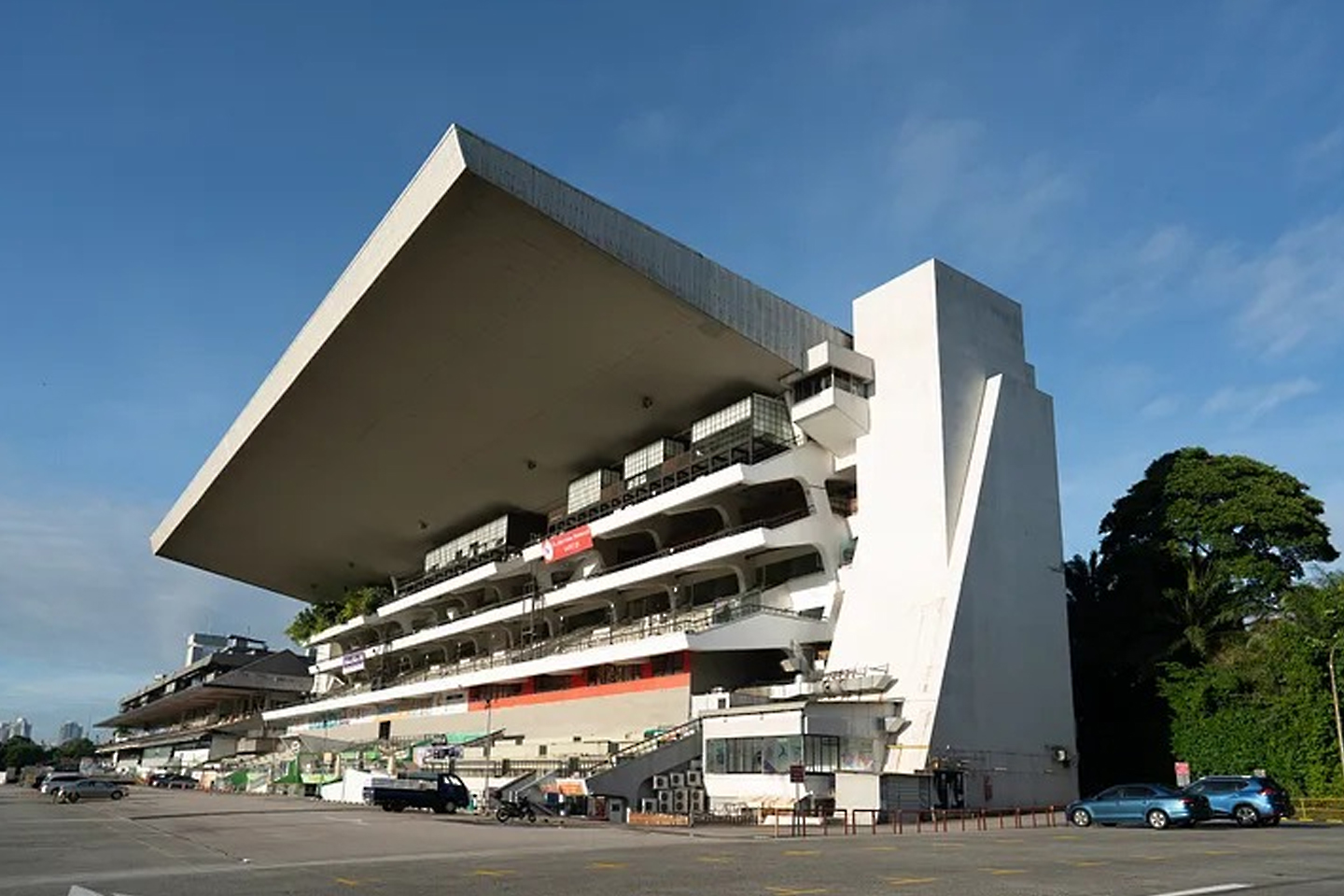
During the unveiling of the plans for the future housing estate at the old racecourse, National Development Minister Desmond Lee announced on 23 May that the former Bukit Timah Turf City could serve as the centrepiece in the neighbourhood. A Heritage Impact Assessment (HIA), led by the NUS Department of Architecture (DoA) team and heritage consultant Purcell, was conducted to assess and preserve the site's heritage significance.
Read at: https://www.ura.gov.sg/-/media/Corporate/Planning/HIA/HIA_BTTC_PAGE_30MB.pdf
Bioengineered hydrogels offer new insights into tumour cell growth

A new approach to culturing a critical component of tumours, integrating advanced cellular analysis techniques with biomaterials engineering, offers promising avenues for developing more effective cancer treatments and improving patient outcomes. The process, developed by a team of researchers led by Assistant Professor Eliza Fong (Biomedical Engineering), makes use of a bioengineered hydrogel to help clinicians better understand the diversity of cells within tumours and how they influence cancer progression.
The team focused in particular on a population of cells called cancer-associated fibroblasts (CAFs), which come in a variety of different subsets or states. Each of these CAFs has unique effects on how cancer grows and different responses to treatment.
The research was undertaken in collaboration with the National Cancer Centre Singapore and the team’s findings were published recently in the journal Advanced Science.
Read more at: https://cde.nus.edu.sg/news-detail/bioengineered-hydrogels-offer-new-insights-into-tumor-cell-growth/
New technique slashes costs of CO2 conversion

A new energy-efficient, cost-effective technique of converting waste carbon dioxide into value-added chemicals and fuels could help to cut emissions and slow the impact of climate change.
The technique, developed by a team of researchers at CDE led by Assistant Professor Lum Yanwei (Chemical and Biomolecular Engineering), enables the direct conversion of CO2 from treated flue gas, a common by-product of industrial processes, into high-value multi-carbon (C2+) products such as ethylene and ethanol. These are essential raw materials for the production of various everyday compounds such as plastics, polymers and detergents. Furthermore, unlike other conversion methods, the new technique does not require high-purity CO2.
Electrochemical reduction of CO2 has been seen as a promising method for transforming waste CO2 into a range of valuable feedstocks for chemicals and fuels. However, most established methods have required high-purity CO2, significantly increasing costs due to the energy-intensive purification process from sources like flue gases. Additionally, the presence of oxygen impurities in flue gas results in undesired side reactions, significantly reducing the efficiency of the CO2 reduction process.
Asst Prof Lum’s team at CDE aimed to sidestep these challenges by integrating catalyst design with electrolyte selection. In their study, which was published earlier this year in Nature Communications, the researchers first introduced a new method to design catalysts with greatly enhanced efficiencies for the electrochemical conversion of CO2. Utilising this approach, they designed a nickel catalyst boasting exceptional performance for CO2 reduction, achieving an efficiency rate exceeding 99 percent.
Read more at: https://cde.nus.edu.sg/news-detail/new-technique-slashes-costs-of-co2-conversion/
tHEMEat Company selected as a finalist for Liveability Challenge 2024
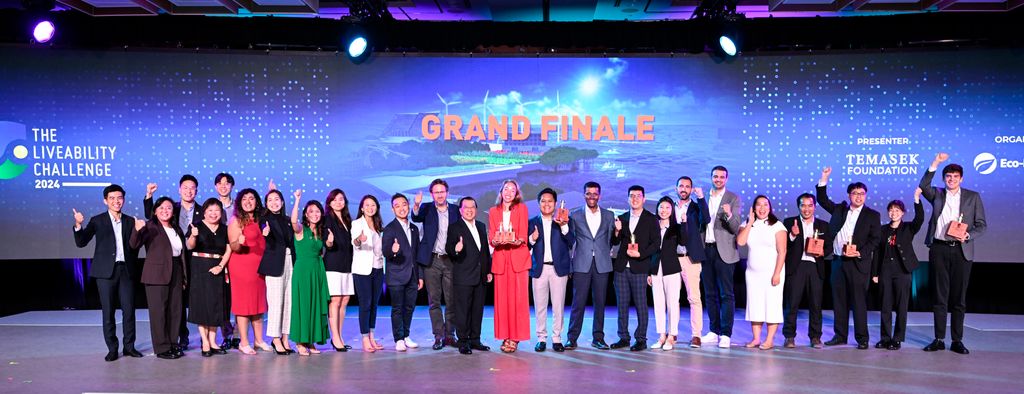
Associate Professor David Leong (Chemical and Biomolecular Engineering) and his team at tHEMEat Company were one of seven finalists at The Liveability Challenge (TLC) 2024, Asia’s largest sustainability innovation challenge. tHEMEat Company is a food tech startup focusing on solutions for alternative proteins of the future.
The multidisciplinary team also consisted of Dr Max Tham, CEO of tHEMEat Co, Ms Chia Jia Yang, CTO of tHEMEat Co, Prof Ang Wee Han (Chemistry) and Dr Leong Lai Peng (Food Science and Technology). The team’s project was one of three innovations chosen under the Food and Nutrition track, beating out a record number of over 1000 submissions from more than 100 countries.
Read more at: https://cde.nus.edu.sg/news-detail/themeat-company-selected-as-a-finalist-for-liveability-challenge-2024/
Harnessing solar energy for environmental remediation

An innovative sun-activated photocatalyst that can rapidly degrade complex pollutants in water into nontoxic by-products using only visible light has been developed by a team of researchers led by Professor Rajasekhar Balasubramanian (Civil and Environmental Engineering). The novel method promises to make water decontamination greener and more sustainable by harnessing renewable solar energy.
The new photocatalyst was engineered with a unique architecture by anchoring single atoms of Indium on a support material containing polymeric carbon nitride. The unique interaction between the two materials played a pivotal role in promoting photocatalytic reactions efficiently, leading to a 50-fold increase in the degradation and detoxification of pollutants compared to conventional photocatalysts such as carbon nitride.
The researchers demonstrated the material’s outstanding performance by quickly removing antibiotics such as tetracycline and ciprofloxacin from water. These antibiotics, prevalent in agriculture and livestock industries, have seen a surge in use during the COVID pandemic, leading to their elevated presence in natural water sources.
Additionally, researchers showed the material strongly absorbs sunlight in the visible range and can be reused multiple times for environmental remediation applications with no significant change in its performance. This discovery holds enormous potential to lower the environmental impact of photocatalytic processes.
The research breakthrough was published in Advanced Materials on 22 May 2024.
STAR celebrates anniversary of satellite launch

The Satellite Technology and Research Centre (STAR)’s microsatellite, LUMELITE-4, was launched on 22 April 2023 and has successfully completed its first year in orbit, a testament to STAR Centre’s research and development capabilities.
LUMELITE-4 is one of the first four microsatellites developed by STAR. To commemorate its first anniversary, STAR invited programme partners A*STAR—i2R, CRISP, and ST Engineering to a gathering on 8 May 2024 to share achievements and discuss plans.
LUMELITE-4 was designed to support the demonstration of a satellite-based high-performance VHF Data Exchange System (VDES) developed by the Institute for Infocomm Research to improve maritime communication and traffic management. With a compact size similar to a modern laser printer, the indigenous satellite was built using NUS’s patented modular and scalable satellite bus system with fault-tolerant features. Assembly, integration, and testing were conducted at NUS STAR’s facility.
STAR is also preparing for the launch of its flagship Formation Flying satellites, LUMELITE-1,2,3, scheduled for the second half of this year.
CDE faculty showcase new technology for ultra-low power AI connected devices
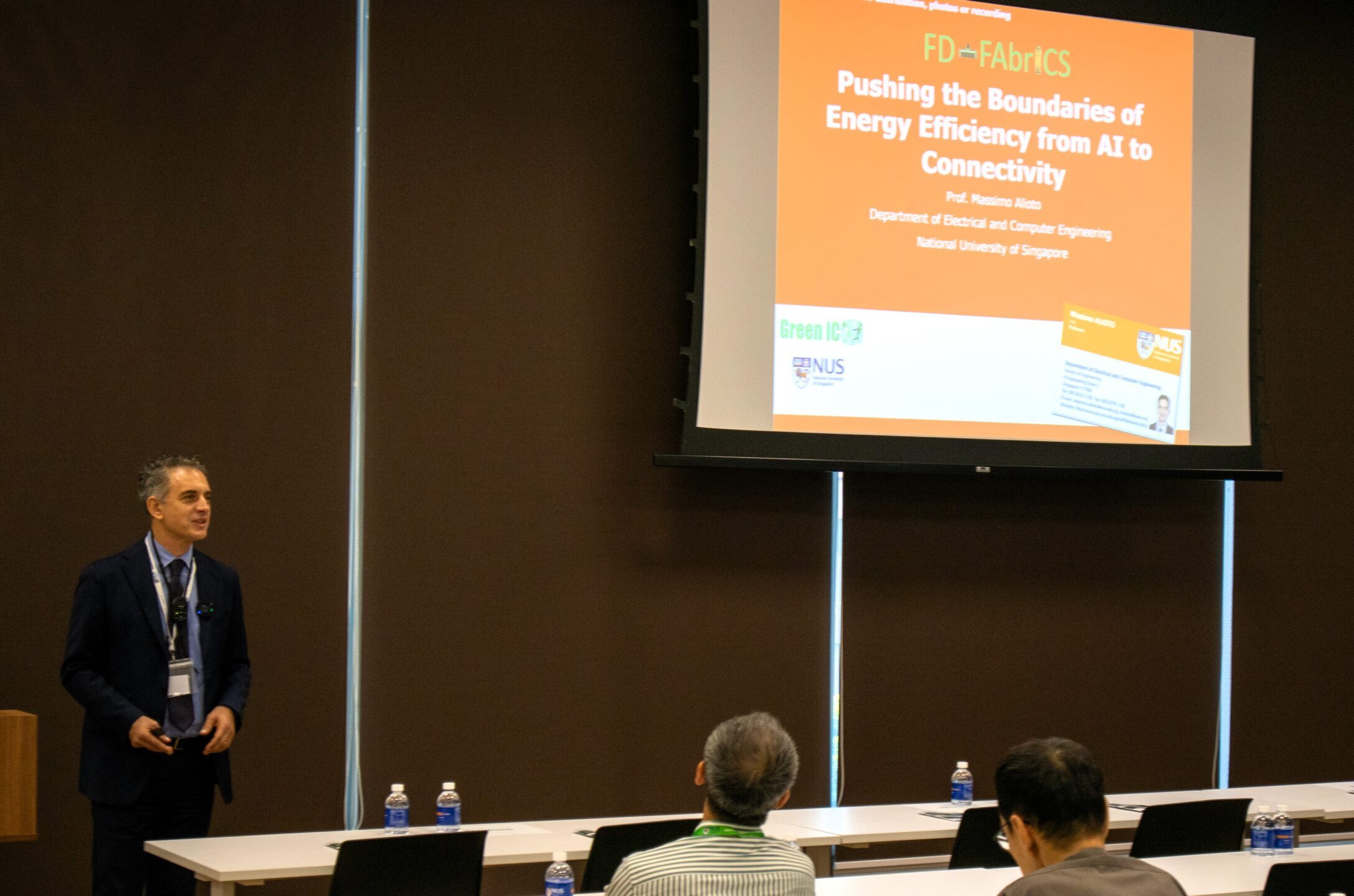
Faculty from CDE, together with industry partners Soitec and NXP Semiconductors, have showcased a new class of silicon systems technology that aims to turbocharge the energy efficiency for AI-connected devices.
Leading this charge is Professor Massimo Alioto (Electrical and Computer Engineering), Director at the FD-SOI Always-on Intelligent & Connected Systems (FD-fAbrICS) joint lab, where the new suite of technologies was developed. This new technology, a form of fully depleted silicon-on-insulator (FD-SOI) technology, can be applied to the design and fabrication of advanced semiconductor components. Some of the improvements in this new technology include the ability to support intense computational workloads for use in Industry 4.0 applications, extending the battery life of wearables and smart objects by a factor of 10 as well as cutting the power consumption of Internet-of-Things (IoT) devices by half.
Read more at: https://cde.nus.edu.sg/news-detail/cde-faculty-showcase-new-technology-for-ultra-low-power-ai-connected-devices/
Unlocking the potential of active matter

Imagine a world where materials could reshape themselves, tiny machines could navigate on their own, and structures could adapt to their environment. In this realm of so-called ‘active matter’, minuscule, self-moving entities such as bacteria, microtubules, and tissue cells come together to create fascinating patterns and movements.
In a recent study, researchers at CDE led by Assistant Professor Zhu Lailai (Mechanical Engineering) have explored the behaviour of active matter, shedding new light on how these tiny agents transition between different states – solid, liquid, and gas – and even alter the flow pattern of fluids. Their findings could offer new insights into designing futuristic materials that can transform at will.
“Active matter is composed of small, self-moving units that convert biological energy into mechanical motion,” said Asst Prof Zhu. “Think of it as a microscopic dance where these entities interact, creating dynamic patterns and behaviours. In recent years there has been growing interest among scientists in studying these phenomena, aiming to understand the underlying principles and apply them to create innovative materials and devices.”
In their latest research, published as a featured article in the journal Nature Communications, Asst Prof Zhu focused on a specific type of active matter made up of tiny droplets that can move on their own as a result of a specific chemical reaction. Using powerful computer simulations, they explored how these droplets behave and found they undergo transitions similar to how ordinary matter changes from solid to liquid to gas when heated, a phenomenon known as phase transition.
Read more at: https://cde.nus.edu.sg/news-detail/unlocking-the-potential-of-active-matter/
Major Grants Awarded
The major grants (start date in May 2024) with total project value > $1M.
| Hosting Unit | Project Title | Funding Programme (Source of Funding) |
Principal Investigator | Co-Investigator |
| ECE | BLISS: Beyond Liquids with In-Situ Solid-state Surficial Sensorics | A*STAR MANUFACTURING, TRADE AND CONNECTIVITY (MTC) PROGRAMMATIC FUND - 2024
(A*STAR) |
Thean Voon Yew | Liu Yuxin |
| MSE | High-throughput screening of redox-active adsorbents for electrochemically mediated carbon capture | LOW-CARBON ENERGY RESEARCH (LCER) PHASE 2 - EMERGING TECHNOLOGY GRANT - 2023
(A*STAR) |
Mao Xianwen | |
| MSE | High efficiency, direct CO2 capture using direct joule heating of conductive, porous solid absorbents | LOW-CARBON ENERGY RESEARCH (LCER) PHASE 2 - EMERGING TECHNOLOGY GRANT - 2023
(A*STAR) |
Barbaros Ozyilmaz | Daria Andreeva-Baeumler, Konstantin Sergeevich Novoselov |
| ChBE | Enzymatic CO2 utilisation: towards efficient biocatalytic carboxylation of aromatics to produce useful chemicals | LOW-CARBON ENERGY RESEARCH (LCER) PHASE 2 - EMERGING TECHNOLOGY GRANT - 2023
(A*STAR) |
Li Zhi | |
| ChBE | Plug flow pattern for harvesting rain energy via solid-liquid charge separation | LOW-CARBON ENERGY RESEARCH (LCER) PHASE 2 - EMERGING TECHNOLOGY GRANT - 2023
(A*STAR) |
Soh Siow Ling | Zhao Dan |
| ME | Simulation of robotic lab configurations to optimise time, space, and energy utilisation | (Pfizer Asia Manufacturing Pte Ltd) | Chui Chee Kong | |
| CEE | Development of a skilful seasonal rice forecasting system to safeguard Singapore's rice import | SFA-OSTIN-CNCS PROGRAMME ON FOOD SECURITY - 2024
(NRF) |
He Xiaogang | Tang Hao (Geography), Srivatsan Vijayaraghavan (Tropical Marine Science Institute) |


